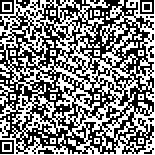| 摘要: |
| [摘要] 目的 探讨幼年特发性关节炎(JIA)患儿膝关节的主要MRI征象及与临床不同活动性分期的关系。方法 回顾24例临床确诊为JIA,并出现膝关节疼痛、肿胀的患儿的影像学资料,分析其MRI主要征象及与临床不同活动性分期的关系。结果 17例MRI增强扫描均出现髌上囊滑膜增厚,呈弧形显著强化;11例可见血管翳形成(11/17),其中处于急性、亚急性活动期的6例(6/17)呈小结节状强化;处于活动期、迁延期的3例(3/17)可见小结节状强化灶及条索状无强化影;处于迁延期、稳定期的2例(2/17)仅见条索状无强化影。24例患儿均可见髌上囊积液。髌上囊最厚层面滑膜厚度、髌上囊积液均可反映疾病活动性分期,并具有相关性。结论 JIA患儿膝关节的MRI征象具有一定特征性,可反映JIA疾病所处的不同活动性分期。 |
| 关键词: 幼年特发性关节炎 膝关节 磁共振成像 临床分期 |
| DOI:10.3969/j.issn.1674-3806.2012.08.08 |
| 分类号:R 445 |
| 基金项目:广西医科大学研究生创新课题(编号:2010105981002M202) |
|
| The main MRI signs of knee joint and the clinical stages of juvenile idiopathic arthritis |
|
WANG Yi, LI Rui
|
|
Department of Radiology,the First Affiliated Hospital of Guangxi Medical University,Nanning 530021,China
|
| Abstract: |
| [Abstract] Objective To explore the main MRI signs of knee joint and the clinical stages of juvenile idiopathic arthritis (JIA) in children.Methods Twenty-four children who had been clinically diagnosed as JIA and with the symptom of knee pain and swelling were selected to observe their MRI signs of knee joint and the corresponding clinical stages.Results With MRI enhanced scan, there were 17 cases showed synovial thickening of suprapatellar bursa and a significantly arc strengthend in 24 children; 11 cases showed the pannus formation in the 17 children (11/17) of them, 6 cases who were in the acute or subacute period of activity showed small nodular strengthend (6/17), 3 cases in the active or delayed period (3/17) showed small nodule-like strengthened focus and the cord-like non-strengthened shadow, 2 cases who were in the delayed or stable period (2/17) only showed the cord-like non-strengthened shadow. All of 24 children showed suprapatellar bursa effusion. The synovial thickness of the thickest layer of suprapatellar bursa and the suprapatellar bursa effusion could reflect activity of JIA, and there was correlation between the two indexes and clinical stages.Conclusion There was certain characteristic of MRI signs of the knee joint in JIA children, which could reflect the different clinical periods of JIA disease. |
| Key words: Juvenile idiopathic arthritis Knee Magnetic resonance imaging Clinical stages |

